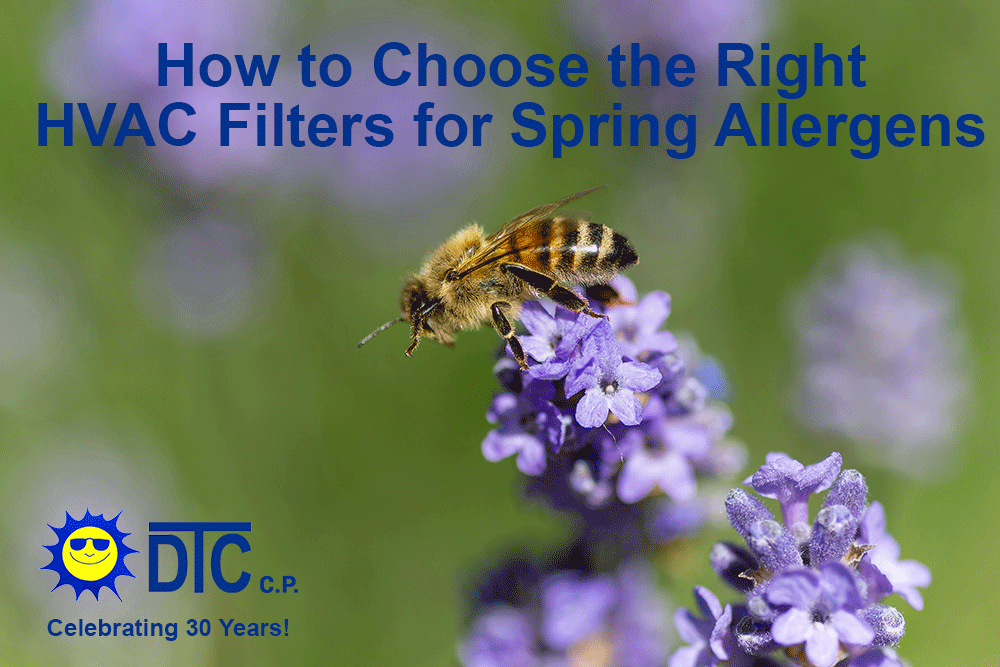
Spring is in the air! For many, that means spending time outdoors gardening, hiking, swimming, and enjoying nature. While flowers, trees, and other natural wonders are coming to life, it doesn’t come without a cost. Spring fever can be quite literal if you suffer from pollen allergies.
Instead of consigning yourself to three months of watery eyes, a runny nose, and sinus headaches, find out how you can enhance spring allergen control with HVAC filters.
Choosing the Right HVAC Filters for Allergies
By choosing the right air filter, you can reduce the number of allergens in your home. How can you do this? Buy an HVAC filter with high ratings.
Here’s an overview of two important ratings, MERV and HEPA. MERV stands for Minimum Efficiency Reporting Value. It tells you how well a filter captures particulates, including those that trigger allergies and Cedar fever. How does it work? Higher MERV ratings mean better filtration. HEPA stands for High Efficiency Particulate Air filter. This equipment traps tiny particles and is ideal if you or a loved one has severe allergies.
HVAC Filters for Spring Allergy Control
There are three types of HVAC filters for allergies:
Fiberglass Filters: These filters are affordable and easy to come by, but they aren’t all that effective at capturing tiny particles.
Pleated Filters: Pleated air filters have a denser surface area that traps a high percentage of allergens before they enter your HVAC air flow. They are suitable for most homes.
Electrostatic Filters: Using a static charge, these filters trap allergens. They’re effective, but require frequent replacements.
HEPA Filters: It’s important to find the brand and size that suits your heating and AC system. However, HEPA filters provide exceptional protection against cedar pollen, dust, debris, and other allergens.
Combat Spring Allergies and Cedar Fever with HVAC Filters
Cedar fever season peaks in January and February. However, your HVAC system can manage lingering effects in March and throughout the year. Here’s how:
Air filtration: HVAC systems with air filters trap cedar pollen circulating indoors. If you don’t remove allergens from your home, you may find yourself sneezing, coughing, and running for your allergy medication long after spring. Tip: Change your filter every month during peak allergy season.
Reduced air circulation: Close your window and crank up your HVAC system for proper ventilation. Filtered air limits the amount of new allergens that enter your home. Tip: Choose an HVAC filter for allergies with a rating of MERV 13 or higher.
Maximizing HVAC Filter Efficiency for Relief from Cedar Fever
You can combat cedar fever and allergies with regular HVAC maintenance and system improvements. Additionally, you should schedule frequent filter installation and changes.
• Put in a fresh filter monthly during the spring pollen season. Our team of licensed HVAC pros can recommend and install the right filter for you. We’ll even show you how to change the filter and help you set up reminders on your wall calendar or phone.
• Clogged filters won’t effectively protect your home. That’s why it’s important to find an air purifier with high ratings for additional protection. Purifiers with HEPA filters capture tiny allergens like cedar pollen.
If you need assistance with any of these tasks, feel free to consult with one of our professional HVAC technicians. We’ll set up regular maintenance to keep your HVAC system and filtration equipment running smoothly.
Contact the pros at DTC for services that can help you achieve spring allergy control and improved indoor air quality!
